1,2-diols are oxidized to ketones or aldehydes by periodic acid HIO4. Periodic acid reacts with diol to form a cyclic intermediate. The reaction takes place because iodine is in a highly positive oxidation state, so it readily accepts electrons. When the intermediate breaks down, the bond between the two carbons bonded to the OH groups break.

Which of the following compounds will not react with HIO4?

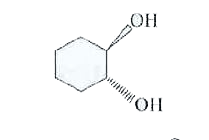


The correct Answer is:C

both -OH are anti so transition state formation can.t be occur.
Similar Questions

When a nucleophile attack to carbonyl group of a carboxylic acid derivative, the carbon-oxygen π- bond breaks. The resulting intermediate is called a tetrahedral intermediate because sp2 carbon in the reactant has become a tetrahedral (sp3) carbon in the intermediate.
Here ..Yɵ is leaving group, the weaker base is expelled preferentially.
Q. Which of the following given compounds don't form amide, when react with CH3COCl.
(1). CH3−NH−CH3
(2). CH3−N∣CH3−CH2H5
(3).
(4). CH3−CH2−CH2−NH2
View Solution1,2-diols are oxidised to ketones or aldehydes by periodic acid HIO4. Periodic acid reacts with dipol to form a cyclic intermeditate. The reaction takes places because iodine is in a highly positive oxidation state, so it readily accepts electrons. When the intermeidate breaks down, the bond between the two carbon bonded to the OH group break.


Identify D.
View Solution
Knowledge Check
1,2-diols are oxidised to ketones or aldehydes by periodic acid HIO4. Periodic acid reacts with dipol to form a cyclic intermeditate. The reaction takes places because iodine is in a highly positive oxidation state, so it readily accepts electrons. When the intermeidate breaks down, the bond between the two carbon bonded to the OH group break.

Which of the following compounds will not react with HIO4?A B
B C
C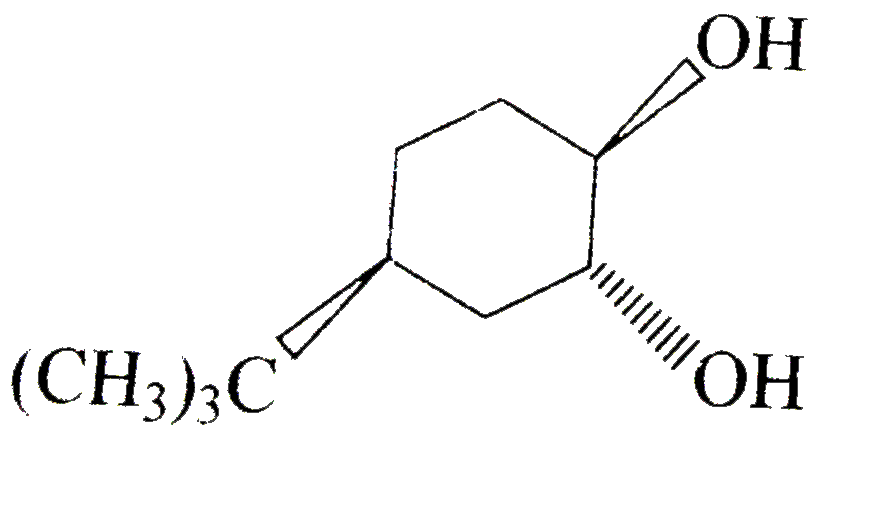 D
D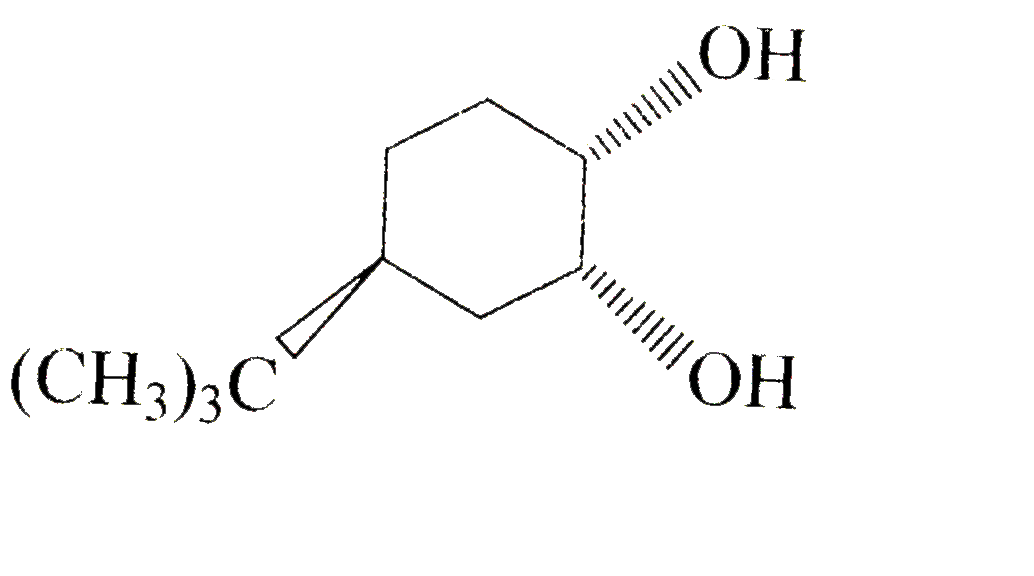
1,2-diols are oxidized to ketones or aldehydes by periodic acid HIO4. Periodic acid reacts with diol to form a cyclic intermediate. The reaction takes place because iodine is in a highly positive oxidation state, so it readily accepts electrons. When the intermediate breaks down, the bond between the two carbons bonded to the OH groups break.


Identify D.A B
B C
C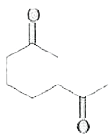 D
D
1,2-diols are oxidized to ketones or aldehydes by periodic acid HIO4. Periodic acid reacts with diol to form a cyclic intermediate. The reaction takes place because iodine is in a highly positive oxidation state, so it readily accepts electrons. When the intermediate breaks down, the bond between the two carbons bonded to the OH groups break.


Which of the following will not from by above reaction?AH−O∣∣C−HBCH3OHCCO2DH−O∣∣C−OH
1,2-diols are oxidised to ketones or aldehydes by periodic acid HIO4. Periodic acid reacts with dipol to form a cyclic intermeditate. The reaction takes places because iodine is in a highly positive oxidation state, so it readily accepts electrons. When the intermeidate breaks down, the bond between the two carbon bonded to the OH group break.

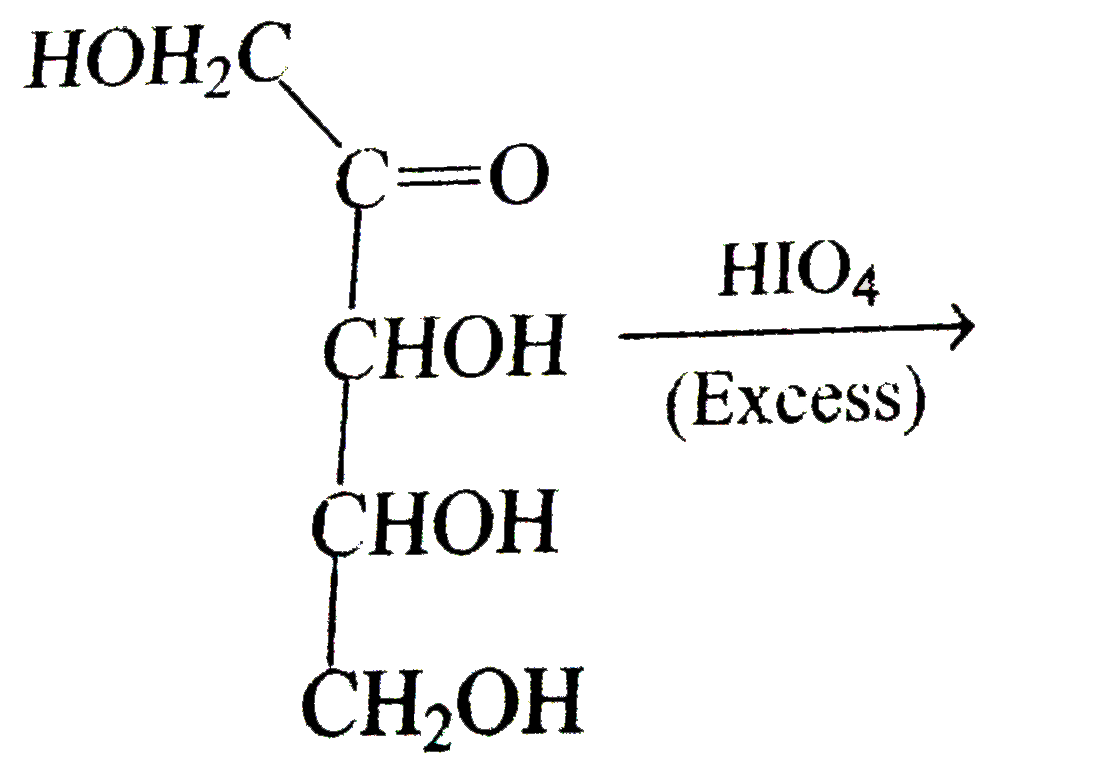
Which of the following will not form by above reaction?
View SolutionA reaction characteristic of vicinal diols is their oxidative cleavage on treatment with periodic acid (HIO4). The carbon-carbon bond of the vicinal diol uinit is broken and two carbonyl groups result. Periodic acid is reduced to iodic acid (HIO3)

Cyclic diols react to give dicarbonyl compounds. The reactions are faster when the hydroxyl gorups are cid than when they are trans but both stereoisomers are oxidised by periodic acid. Periodic acid cleavage of vicinal diols is often used for analytic purposes as an aid in structure determination. By identifying the carbonyl compounds produced, The constitution of the diol may be deduced.
Which of the following compounds (s) is / are obtained when the following compound is oxidixed by HIO4 ?

View SolutionA reaction characteristic of vicinal diols is their oxidative cleavage on treatment with periodic acid (HIO4). The carbon-carbon bond of the vicinal diol uinit is broken and two carbonyl groups result. Periodic acid is reduced to iodic acid (HIO3)
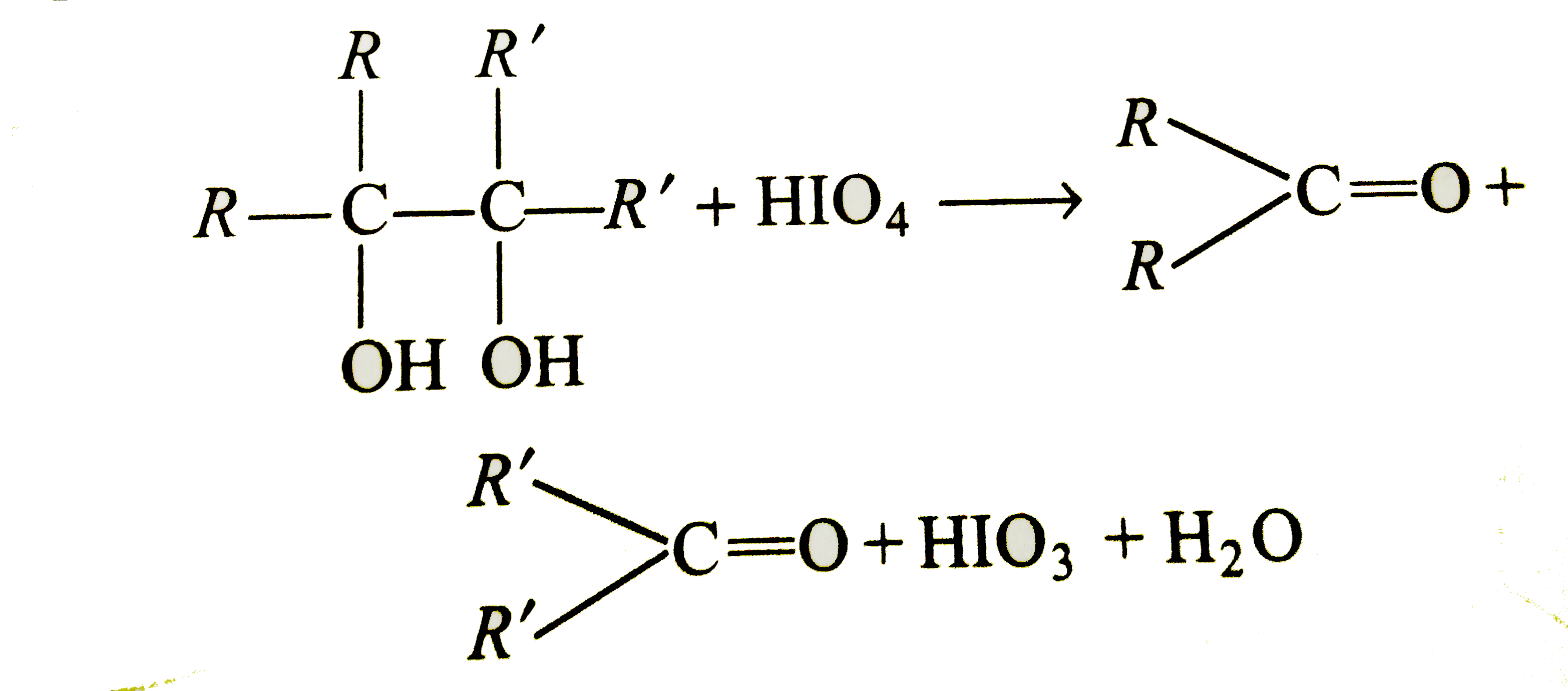
Cyclic diols react to give dicarbonyl compounds. The reactions are faster when the hydroxyl gorups are cid than when they are trans but both stereoisomers are oxidised by periodic acid. Periodic acid cleavage of vicinal diols is often used for analytic purposes as an aid in structure determination. By identifying the carbonyl compounds produced, The constitution of the diol may be deduced.
Which of the following products is/are obtained when glycerol is treated with HIO4 ?
View SolutionA large number of molecular rearrangements involve anionotropic migration of a group to an adjacent atom with incomplete octet. The migration group may either detach from the migration origin and then form bond with the migration terminus or may remain partly bonded to both migration origin and terminus to form a bridged ion intermediate. similar to the electron deficent carbon such as carbocation and carbene intermediates, electron-deficient nitrogen species are known in which the nitrogen bears a positive charge or the nitrogen has an open sextet of electrons, i.e., a nitrene.
Q. Which of the following is stable product for given reaction?
HO−CH2−CH2−CH2−CH2−OHH+−−→ ?
View SolutionA reaction characteristic of vicinal diols is their oxidative cleavage on treatment with periodic acid (HIO4). The carbon-carbon bond of the vicinal diol uinit is broken and two carbonyl groups result. Periodic acid is reduced to iodic acid (HIO3)
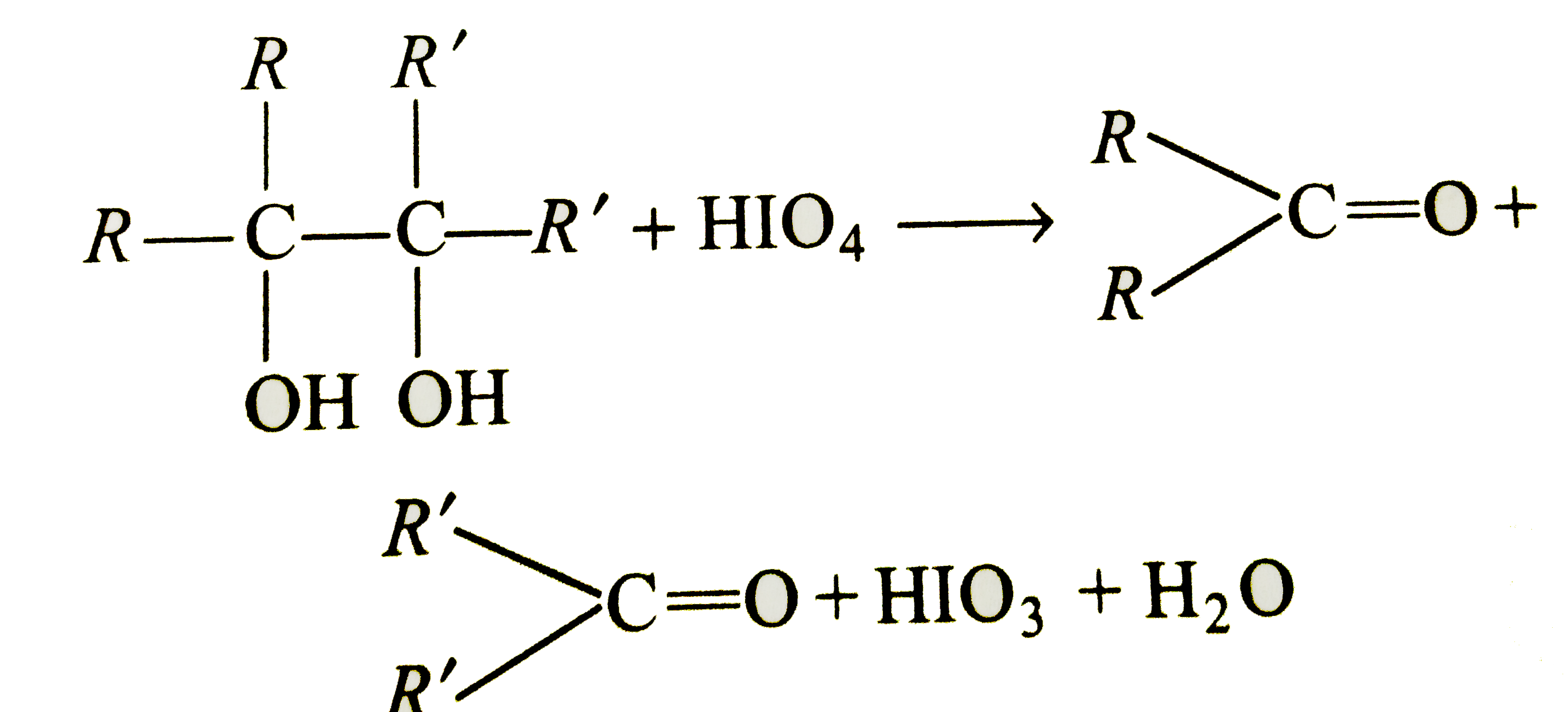
Cyclic diols react to give dicarbonyl compounds. The reactions are faster when the hydroxyl gorups are cid than when they are trans but both stereoisomers are oxidised by periodic acid. Periodic acid cleavage of vicinal diols is often used for analytic purposes as an aid in structure determination. By identifying the carbonyl compounds produced, The constitution of the diol may be deduced.
Which of the following diols will be oxidised by HIO4 ?
View Solution

